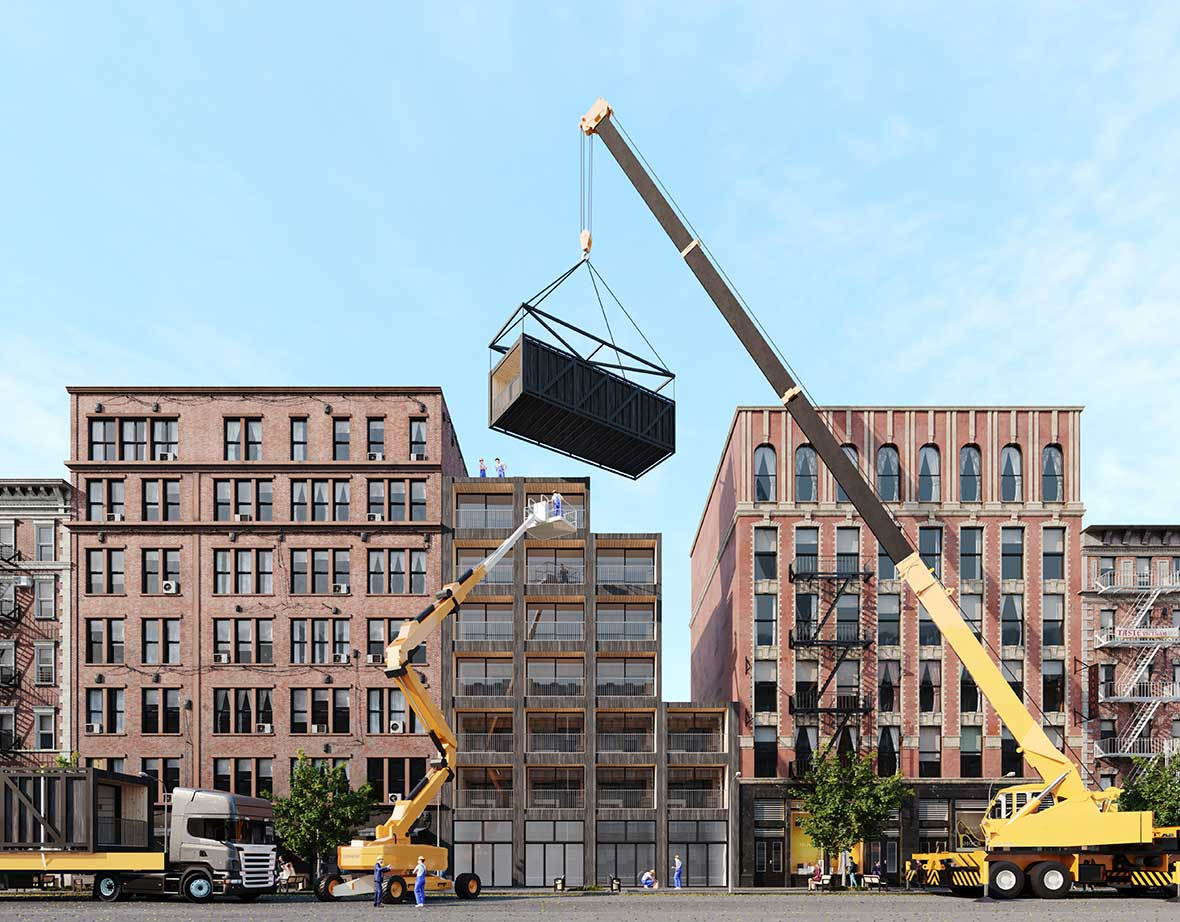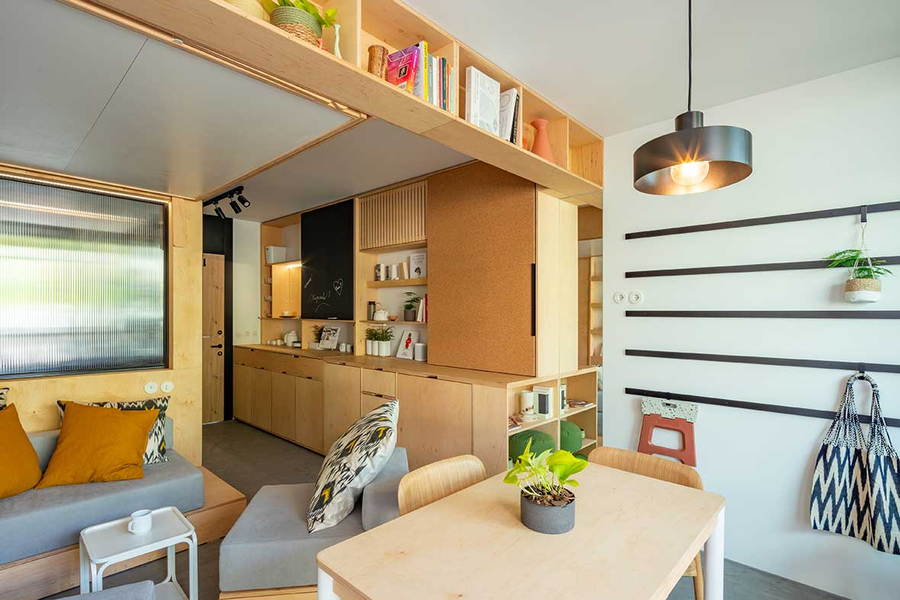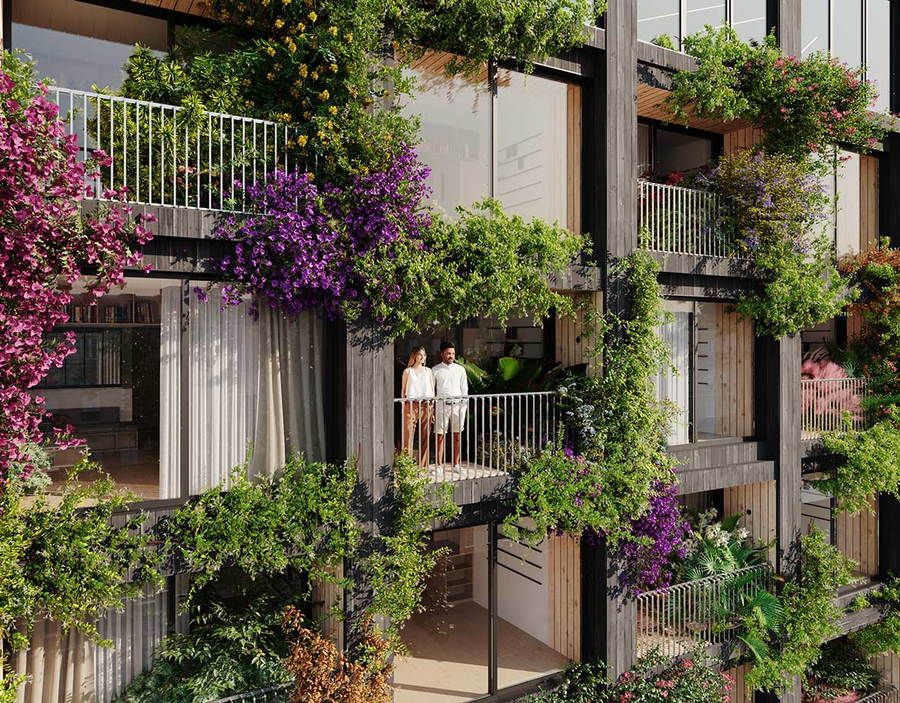These Stackable LEGO-Like Prefab Apartments Reinvent Affordable Housing
In another blow to the already beleaguered home buyer’s market, Zillow recently released a revised home price forecast predicting that U.S. home prices would rise approximately 14.9 percent between March 2022 and March 2023. While this is a slight downturn of almost three percent from their estimates last month, it’s still not the most encouraging news for people in the market for new digs.

The already distinctively difficult market has become even more complicated due to the COVID-19 pandemic, as many people have had to evaluate how they both live and work by either working from home or incorporating a hybrid home/work schedule. So where does this leave young professionals looking for affordable housing?
While the answer is complex, there are some developers looking to create affordable solutions when it comes to finding a place to call home.


Enter French developer Bouyges Immobilier, who launched a co-living company last year to create a new template for how “we rent, use, and share living spaces.” Pairing with the Paris-based architecture studio Cutwork, Immobilier’s aim is deceptively simple: an interior design concept that gives “working people, between 25 to 40 years old, [access to] high-quality, affordable living and a socially connected life…” But how does this lofty goal translate in real life?
To find the answer, look to LEGO.
Currently on display in Paris, the 26-square-meter PolyRoom prototype prefab unit is the ultimate building block creation translated into real-life housing. Designed to stack like LEGO bricks, the prefab modules are built using conventional construction methods — but instead of your standard cookie-cutter apartment units, these units are composed with residents’ ever-changing needs in mind, offering unique spaces to live, work, and adapt. To accomplish this, the modules were modeled to be literally transformative, equipped with movable furniture and clever storage solutions that maximize the living space and its potential for adaptation.

Based on the Japanese concept of washitsu, Cutwork co-founder and architect Antonin Yuji Maeno envisioned spaces that were multipurpose and flexible. He says, “It’s no longer about the amount of square meters [physical living space] we live in but about living in polyvalent spaces that are designed to be reconfigured to fit all our intimate and social needs.”
The bottom line? Residents have a home space that’s in flux and adaptable (yet comfortable), with plenty of options for living their best hybrid work/home lives. Plus, these prefab units can be created more quickly than more traditional building methods, stacking up like LEGO bricks into ready-to-move-in spots that hope to make their mark in the affordable housing sphere.

And just because the units act on the same principle as LEGO bricks doesn’t mean they’ll be dull, drab, and like those dreaded office cubicles stacked on end. Instead, Cutwork hopes to incorporate eco-friendly touches like balconies, facades, and rooftops full of native plants — lush, green spaces that interact with the local ecosystem instead of solely disrupting it. Hoping to open at least 15 of these sites by 2025 (that’s 2,500 PolyRoom bedrooms!), Bouyges Immobilier is ready to impress with these prefab beauties that are transformable and economical, efficient and eco-friendly.




